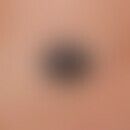Synonym(s)
DefinitionThis section has been translated automatically.
Spice and medicinal plant from the borage family (Boraginaceae). Originally native to the Mediterranean region, borage has also been found in Central Europe since the late Middle Ages. It is an annual herbaceous plant that grows up to 70 centimetres high and has bristly hairs on its stems and leaves. The rough lanceolate leaves are dark green and 10-15 cm long.
Flowering time: May to September. The flowers are bright blue. Borage produces an oily seed about 0.5 cm long and dark brown in color.
For phytotherapeutic use, see area of application/use
Negative monograph of Commission D
Folk: Expectorant for coughs
Field of application/useThis section has been translated automatically.
Borage flowers and herb contain tannins, soluble silicic acid and mucilage; used in folk medicine for inflammation of the respiratory tract, urinary retention and diarrhea. The content of liver-toxic pyrrolizidine alkaloids can be high; medicinal use is not recommended.
Internal: The oil extracted from the seeds is almost free of alkaloids when cold-pressed. The proportion of gamma-linolenic acid is about 20% (higher than in evening primrose oil). It is used as an open oil or in capsule form for atopic eczema
Externally: 10-20% of the oil can be added to appropriate ointment bases (e.g. Unguentum emulsificans). Indication: chronic eczema, atopic eczema
You might also be interested in
Pregnancy/nursing periodThis section has been translated automatically.
The pyrrazolidine alkaloids in the herb have a hepatotoxic and carcinogenic effect.
Undesirable effectsThis section has been translated automatically.
Lowering the seizure threshold!
ContraindicationThis section has been translated automatically.
Allergy to borage. Caveat: Lowering of the seizure threshold - no administration during anticonvulsant therapy.
Recipe(s)This section has been translated automatically.
Note(s)This section has been translated automatically.
LiteratureThis section has been translated automatically.
- Wenigmann M. (2017) Phytotherapy medicinal drugs, phytopharmaceuticals, application. Urban & Fischer, pp. 86-87.
- https://pflanzen.fnr.de/industrial-plants/pharmaceutical-plants/plant-database.
- Miller LG (1998) Herbal medicinals: selected clinical considerations focusing on known or potential drug-herb interactions. Arch Intern Med. 9;158(20):2200-2211. doi: 10.1001/archinte.158.20.2200. PMID: 9818800.





